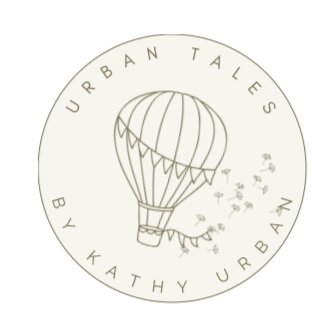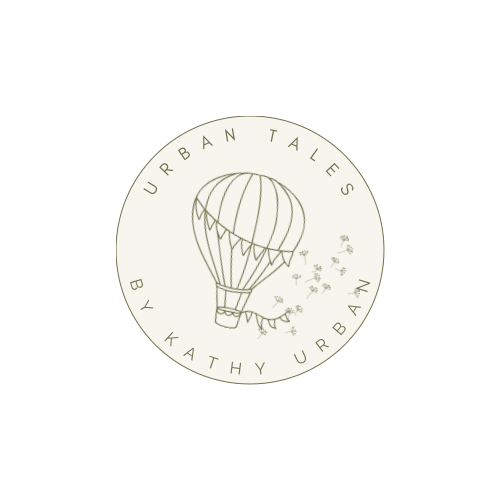When loosing something special and why Lola is so much more than just a TOY
Imagine …
… a toy …
… a very special toy …
… that hops, skips and jumps alongside you everywhere you go ..
… one that sails with you across the ocean in that cardboard paper boat …
… and snuggles up to you at the end of a long eventful day …
Then imagine how - sometimes - that special toy - goes on a little adventure of its own.
We have such a special toy – her name is Lola.
And together we’ve imagined all these amazing adventures for Lola, whenever we can’t find her.
Coping with the loss of someone or something special can be an overwhelming experience, not just for little ones.
Going through a period of loss and grief can easily knock us off our feet. It’s often hard to accept that things may not be the same again with that special someone or something no longer at our side.
Not everyone will go on to write a piece of music after a bad break up, produce stand out artwork during a period of grief or feel inspired to share a story about their little one’s lost toy, yet creativity and indeed one’s imagination can work wonders to cope with unsettling events.
Imagining Lola’s adventures and ‘making up’ stories was my - admittedly impromptu attempt - at distracting my young child from a moment of sadness by adding in positive emotions of joy and hope.
Perhaps our bunny had gone off to get some ice cream? Could she have taken the bus to fulfil her dream of becoming a bus driver? It was an entertaining thought, certainly preferable (AND funnier) than envisioning how Lola might have been rolled over by the very same routemaster.
Looking at it, our cultural history is filled with works of art inspired by moments of heartache. Whenever we go through our own personal loss experiences, we may find that despite its abstract nature some music or painting can ‘speak’ to us in a way others can’t - and unlock emotions to help us reflect and put things back in perspective.
While my main intention of writing down Lola’s story was to share a sweet adventure with a young readership, I have since learned how the book does speak to people on different levels: for some the idea that a person they recently lost, will have moved on to their new forever adventure, provides a settling thought.
Back to our toy bunny … and why - you may ask - would you tell these made up stories - if you could just get another version at the toy shop
First and foremost, it was my maternal instinct - a need to deal with an upset child - that first prompted the stories about our little runaway bunny. I had also skipped that part in the parenting manual, which suggested to never ever allow that stuffy toy leave the house or at least retain a small stock of back up bunnies.
But upon reflection (and as a reader of fairy tale books about mermaids and other fantastic creatures), I also like to entertain the idea that toys may indeed have a soul. To the grown up eye, Lola was just a small, cute looking stuffy toy made of polyester fibre and cotton fabric - a pretty match to the newly set up nursery room. She wasn’t alive in the sense your pet bunny or dog or goldfish or indeed a person might be. But for my daughter she was very much ‘alive’. She would chat to her bunny, feed it, and (without my permission) occasionally ‘run her a bath’. She had so much love for her special toy. Could a version of Lola, which wasn’t Lola, ever replace her?
To us, at least, the answer was very clear. It meant whenever we lost her, we continued to add a bit of magic to the version of events: What if Lola wasn’t lost? What if she had just decided on a little adventure? Just think of all the fun things she could do, see and learn …
‘But you shouldn’t give up either,’ he then added, as if he knew what Lola must be thinking. As a puppy he had learnt to swim himself once and he wanted to help this strange-looking bunny. (from Hop Lola Hop)
How real can a toy be? This scene from the book shows the interaction between Lola and her dog friend. I liked the idea that the dog would consider Lola to be an actual bunny rather than a toy even though he recognises her ‘odd’ bunny looks.
Remembering my own comfort toy
Lola’s story also reminds me of some of my own childhood events. When I was 5 years old, I had a little stuffy racoon I was very attached to. One day I decided to take it to school. A mistake as I’d soon learn. I still remember vividly how one of the boys ridiculed me for carrying around a stuffy toy like a baby. There was a bit of an altercation at the schoolyard, some pulling back and forth until eventually he managed to get hold of my raccoon - except for its tail, which I was still holding on to.
Needless to say, I was heartbroken. Seeing my toy being ripped apart was too painful to bear. The only consolation I had was that the doctor at the teddy bear clinic would be able to fix my injured racoon. Knowing that he would be cared for by someone who could make the pain go away was a very reassuring thought. It’s a memory that’s stayed with me all those years, and I still prefer this thought over any other ‘grown up’ version.
I never actually asked my mom whether he went to the clinic or if it was her, who spent one evening stitching him back together, but that’s not the point.
She found a unique way to help me cope with this situation, reassuring me that some very good people were going to help my poor bear.
When I began writing down the stories of Lola, I imagined her doing things which my kids loved doing. They love building boats and cars and anything that moves out of cardboard boxes. They love to HOP – SKIP and JUMP along the curb. There was a time when my six year old would make cartwheels instead of walking like the rest of us. So perhaps Lola was also practising those? A cartwheeling toy bunny – Isn’t that a very entertaining thought.
So JUST IMAGINE - a few final thoughts ..
I had this conversation the other morning about how making up ‘alternative events’ can help young children cope with the loss of a comfort toy.
Would it have been better to explain what (actually) happened or should a cheeky replacement have done the trick?
In the end, it’s something that every parent will decide for themselves.
Imagination offers a form of expression to essentially ‘cope’ with unsettling events. I had initiated these alternative scenarios to make my children feel happy and reassured, to let their imagination take control and make sense of events in a gentle way.
To them (yes, it’s 2022 and we do own 3 Lola’s, by now, one for each kid), their bunny is more than just a toy. She’s a friend who besides hours of play fun offers comfort, cuddles and a sense of familiarity. There’s no way we could ever just replace her with a copy version.
So for the time being, we will continue imagine silly, funny toy bunny adventures - just as we allow Santa to sneak through the garden door (we don’t have a chimney where we live, only AC ducts) or treat the tooth fairy to a snack of ‘Corn Flakes’ as she keeps on leaving coins in exchange for a lost milk tooth.
I am sure that with time some of these imaginary figures may no longer be needed, but I will let my children decide when that is.
In the case of our little toy bunny, should Lola one day decide to hop off one final time, I hope we can wish her all the best on her amazing forever adventure.




